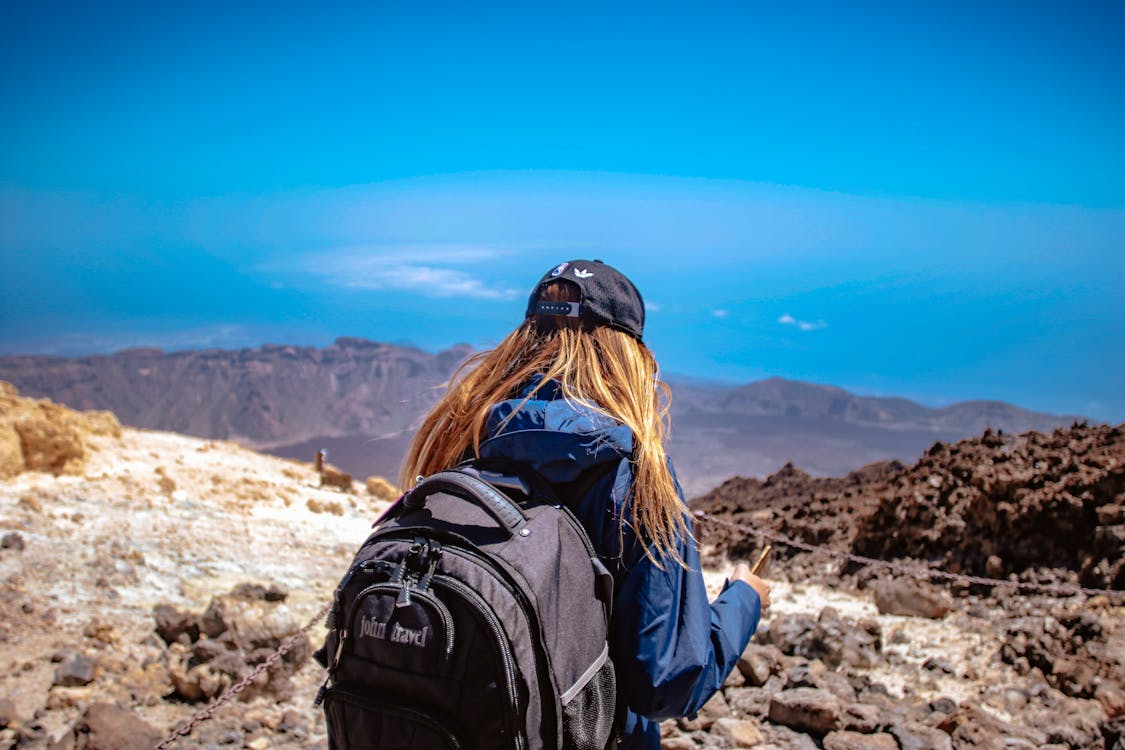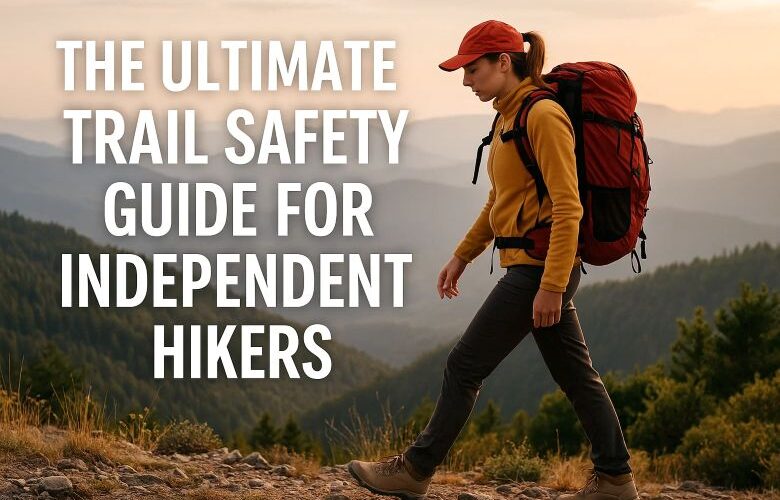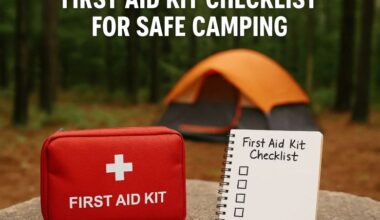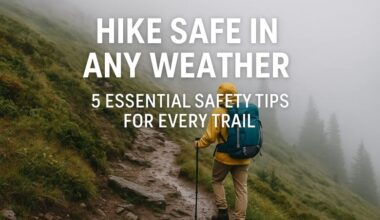Hiking alone has become more popular than ever. People love the freedom, fresh air, and adventure solo hiking offers. And it’s great for your health and mental sharpness. But exploring the wild solo also comes with risks.
Knowing how to stay safe can mean the difference between an exciting adventure and a dangerous situation. Recent trail accidents show why smart planning and safety awareness are essential for hikers, especially when you’re on your own.
This guide will help you prepare, handle, and protect yourself on every outdoor hike.

Planning Your Hike: Preparations Before the Trek
Research and Trail Selection
Pick the right trail based on your skills. Don’t push yourself into unfamiliar territory. Use topographic maps and official park websites to gather facts. Reading trail reviews from other hikers can give you an idea of what to expect.
Look at difficulty ratings of trail path closely, they’re there for a reason. If the trail is marked “moderate,” don’t choose it if you’re a total beginner. Knowing your limits helps avoid dangerous situations like getting lost or injured, especially as an independent hiker.
Weather Forecasting and Timing
Weather plays a big role in trail safety. Always check reliable weather updates before you leave. Apps like Weather.com or local stations can provide the latest forecast. Sudden storms, temperature drops, or heat waves can turn a fun hike into a hazard.
Plan your hike during favorable weather, and be ready in case conditions change unexpectedly. A quick weather check can save you from getting caught in a dangerous storm or heat exhaustion. Read on our written piece to learn how to safely prepare for camping or hiking in any weather.
Preparing Gear and Supplies
Nothing ruins a hike faster than being unprepared. Essential safety gear includes a good navigation tool like a map and compass, a first-aid kit, and an emergency shelter. Carry enough water and healthy snacks to keep your energy up. Don’t forget a charged cell phone and a portable charger for emergencies.
Pack lightweight items so you don’t get bogged down, but always prepare for worst-case scenarios, like having extra clothing or a whistle.
Navigating the Trail Safely
Map Reading and Navigation Skills
Always carry a physical map, even if you use a GPS device. Technology can fail or run out of battery. Learn how to read a map and use a compass, basics that are easy to pick up. Follow trail markers and signs; they’re there for safety.
Using waypoints or landmarks helps you stay on track. If visibility drops or weather turns bad, these skills keep you from wandering off into danger.
Use of Technology for Safety
Trail apps with GPS features can be lifesavers. Some apps let your friends track your location in real time. Setting up emergency alerts can notify loved ones instantly if you face trouble. Remember, offline maps are critical if you lose signal. Manage your phone’s battery, turn off unused apps, and keep it in airplane mode if needed. Technology is helpful, but don’t rely on it alone.
Trail Markers and Environmental Awareness
Pay attention to natural and man-made signs. Painted blazes, cairns, or trail signs point you in the right direction. Most often clues about approaching danger or landmarks might be left by other hikers, so pay attention to the little things. Keep your eyes open for hazards like overgrown paths, loose rocks, or wildlife.
Respect the environment: avoid taking shortcuts, which can cause erosion or damage. Stay alert to your surroundings; they’re your best safety tool.

Personal Safety Measures for Independent Hikers
Communicating Your Plans
Share your trail itinerary with a trusted friend or family member before you leave. Let them know your expected return time. Use check-in routines; call or message once you complete certain sections.
That way, if something goes wrong, someone will notice if you’re overdue. Scheduled check-ins boost your safety net and make sure help can come faster if needed.
You can also communicate with other hikers who might have hiked that trail before to get a little information about the trail and how best to prepare for it.
Handling Emergencies On the Trail
Injuries, wild animals, or sudden weather can happen anytime, so knowing basic first aid, like stopping bleeding or treating blisters, should be a must for independent hikers. Recognizing when a situation is bad enough to need professional help.
If you fall or get hurt, stay calm. Use your emergency shelter or signaling tools, like a whistle or mirror, to alert rescuers. Always have a step-by-step plan for emergencies so you don’t panic.
Safety Equipment and Clothing
Dress in layers to adjust to changing weather. Wear moisture-wicking shirts, windproof jackets, and sturdy boots. Carry a whistle, multi-tool, and flashlight, small items with big safety benefits.
Protect your head and skin from sun, cold, or wind. Regularly check your gear for wear and tear. Proper clothing and safety tools keep you safe from hypothermia, heat exhaustion, or unexpected hazards.
Minimizing Risks and Avoiding Common Mistakes
Staying on the Trail
Venturing off the trail increases the risks of getting lost, damaging the environment, or facing dangerous wildlife. Stick to marked paths, even if they look tempting to shortcut.
When you encounter trail obstructions, handle them carefully or turn around. it’s better to be safe than sorry especially for solo hikers who might have to have someon to rely on incase of an emergency.
Avoiding Overexertion and Fatigue
Know your limits. Pushing too hard can lead to exhaustion or injury. Take regular breaks, stay hydrated, and eat snacks to keep your energy high.
Recognize signs of fatigue: heavy breathing, dizziness, or muscle cramps. If you feel these, it’s time to rest or head back. Ignoring your body’s signals makes accidents more likely and might put you or other hikers at risk.
Respecting Nature and Other Hikers
Wildlife encounters can be safe if you follow simple rules: keep your distance, don’t feed animals, and stay calm. Follow “Leave No Trace” principles to protect the outdoors.
Pack out all trash, stay on trails, and avoid creating conflicts with fellow hikers. Respectful behavior ensures a safe and enjoyable environment for everyone.
Conclusion
Staying safe while hiking alone means being prepared, alert, and respectful of nature. Always plan your route carefully, carry essential gear, and know how to navigate. Share your plans with someone you trust or trusthowrthy independent hikers ,and stay vigilant for signs of trouble.
Remember, your intuition and common sense are your best guides. Your perfect outdoor adventure depends on it!
To keep learning new safety tips and stay updated on trail conditions, subscribe to this blog! Happy hiking! Safe trails await!




